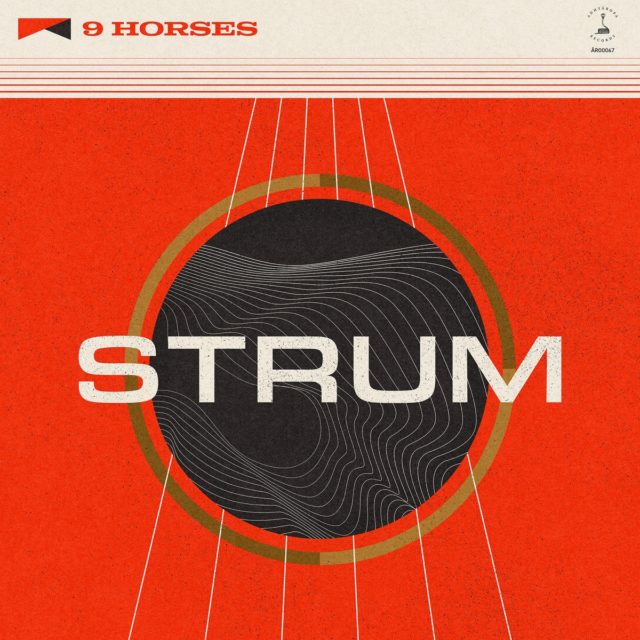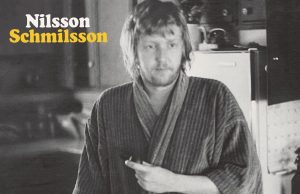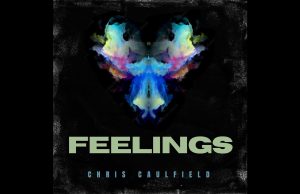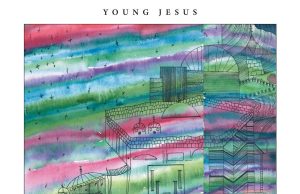9 Horses keep it real — without playing by the numbers — on their tellingly titled and endlessly inventive instrumental album Strum — showcasing today on Tinnitist.
One of the most influential and admired ensembles in progressive jazz and improvised music, the primarily plucked and bowed string instruments of New York City’s 9 Horses return with their most extraordinary collection yet. Bursting at the seams with creativity and virtuosity, this 67-minute epic serves as the antithesis to today’s programmed and A.I.-generated music. 9 Horses consist of Joe Brent on acoustic and electric mandolin, Sara Caswell on violin and hardanger d’amore and Andrew Ryan on bass.
“The record is called Strum because every tune prominently features the sound of a plucked or strummed instrument: Mandolins, guitars, basses, banjos, pianos, and including instruments that usually aren’t thought of that way like violins, drums, even people,” Brent says. “During the recording process I found myself progressively replacing synth textures with acoustic, organic sounds. There’s lots of sounds in here that are identifiably human-made: Creaky gears, ambient room noise, breathing, chair squeaking, and lots of calloused fingers on strings and frets. Sounds like that make me feel like Im in the room with the humans making the music, and remind me it’s humans making it.”
Alongside the trio, Strum also features 25 of the world’s leading instrumentalists from a spectrum of genres: Sam Sadigursky (Philip Glass Ensemble), Kaoru Watanabe (Silkroad Ensemble), Brandon Ridenour (Canadian Brass), Jason Treuting (Sō Percussion), Mike Robinson (Railroad Earth), Jhair Sala (Pedrito Martinez), Victor Otoniel Vargas (Prince Royce), Samuel Torres (Shakira), Glenn Zaleski (Cécile McLorin Salvant), Blair McMillan (piano faculty at Juilliard, Bard, and Mannes), Emily Hope Price (Kishi Bashi), Anna Urrey (Ólafur Arnalds), Ben Russell (Arcade Fire) and Michael Bellar (John Scofield), among others, all of whom have collaborated with the members of 9 Horses previously.
The other participant in the equation is the listener, Brent says. “I almost always stay away from revealing too much about this music since there are no lyrics and you should get to decide how it makes you feel and what or who it reminds you of,” he explains. “If your experience of the music is contrary to what I had in mind when I was writing it, that’s OK. There are no wrong answers. Telling you what I meant to convey artistically steals some agency away from that experience and I don’t want to do that.
“But as for the granular mechanics of how the tunes were composed and recorded, there are some things I can tell you that you may find interesting. The record is called Strum because every tune prominently features the sound of a plucked or strummed instrument: mandolins, guitars, basses, banjos, pianos, and including instruments that usually aren’t thought of that way like violins, drums, even people (what is the human voice but the sound of cords vibrating?).
“During the recording process I found myself progressively replacing synth textures, which predominated our last album Omegah, with acoustic, organic sounds. I wouldn’t say we made things any simpler — it’s still pretty fucking cinematic. But there’s lots of sounds in here that are identifiably human-made: creaky gears, ambient room noise, breathing, chair squeaking, and lots of calloused fingers on strings and frets. Sounds like that make me feel like I’m in the room with the humans making the music, and remind me it’s humans making it.”
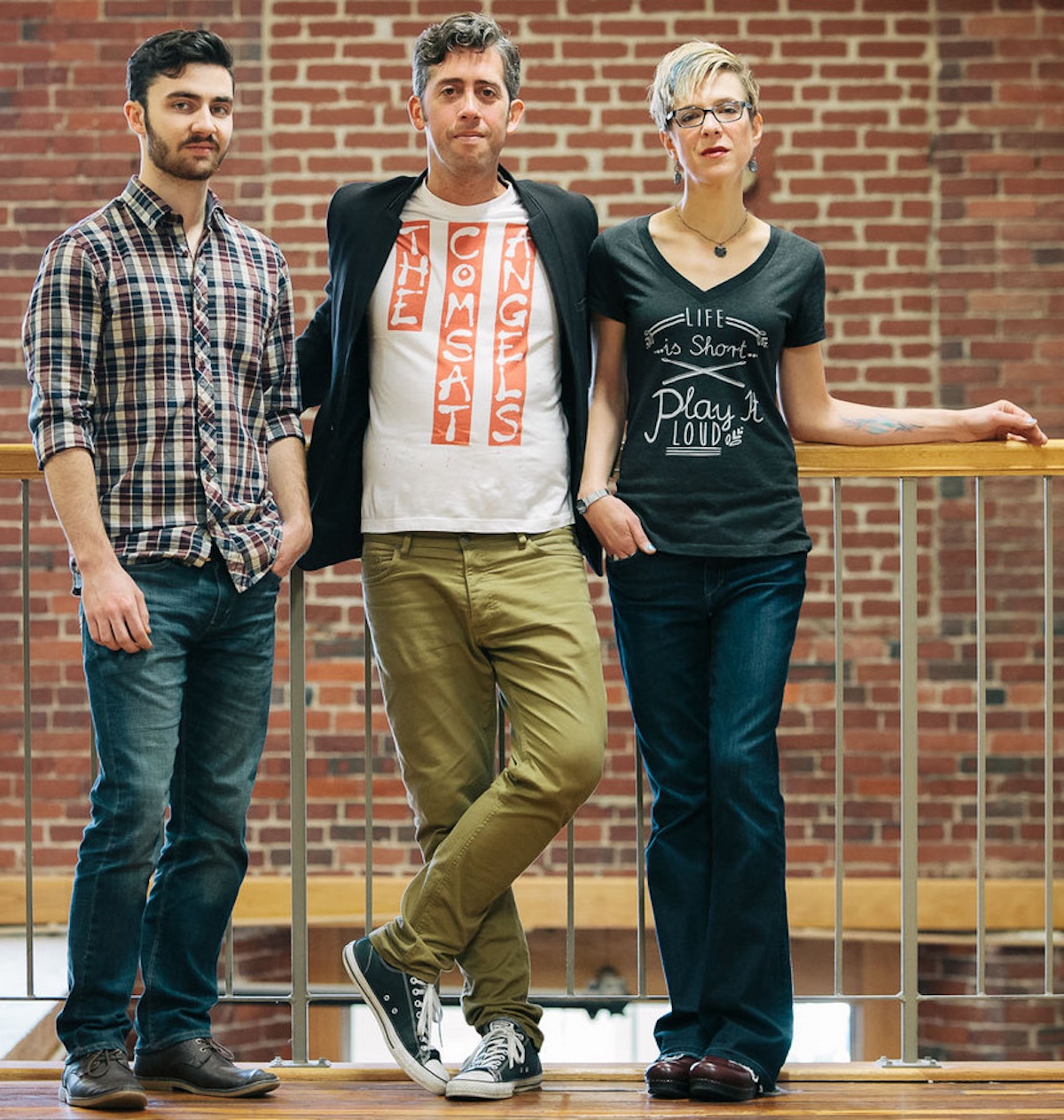
Brent takes us through the album track by track:
Strum
“The album begins with the title track, which is two tunes I’d written previously smashed together. The introduction, in which the instruments pop up one at a time to introduce themselves, came out of a never-finished collaboration with the great violinist and synthesist Todd Reynolds. The rest was from a tune I wrote at the Antenna Cloud Farm artist residency in 2017. I thought the two pieces complemented each other nicely and were a perfect platform to convey the intent of the album.”
Americannia
“The title appeared not only well after I wrote the tune but even after I had started creating a demo and tracking it. The instrumentation changed dramatically over the tracking process. Mostly, it went from electric to acoustic. I wanted there to be space on the record for an uninterrupted few minutes featuring just the acoustic trio of me, Sara and Andrew, so I came up with the intro section after the initial idea for the rest of the tune. I scribbled some unplayable ideas for harp harmonics into the bass part, and Andrew translated them into his own inimitable language — it’s real virtuoso playing and there’s no one else who does it this well. I miked this section really intimately; you can hear breaths, fingers, hands, chairs, bodies, even some raindrops hitting my air conditioner. Nils Frahm’s Felt changed the way I listen to music and you can hear his profound influence here.”
Gasparilla
“I grew up in Tampa where the Gasparilla Festival takes place (named for a probably made-up pirate named José Gaspar who supposedly sailed along the Gulf coast of Florida in the 19th century). It features a pirate ship landing, a parade of drunk pirate cosplayers (Ye Mystic Krewe) tossing beads and fake doubloons into the crowd, a children’s parade, and a music and arts festival. It’s really silly and I love it. None of that has anything to do with this tune other than I wrote it after seeing the music festival one year. I almost cut this for not sounding like the other music on the album but it was too much fun.”
Röhrl
“Walter Röhrl is a German rally driver who I think is really cool and his name is fun to say. He didn’t directly inspire any of this music other than I needed a placeholder name for it and it stuck. I spent a long time trying to make a piano sound like a pitched drum. As Tom Waits said, everyone who has ever played a piano wonders what it sounds like when you drop it out a window. My favorite sound I got was when I stuck Blu Tack in the strings and so that’s the sound in the intro.”
Long Time Away
“In the months before getting married and combining all the stuff from our separate apartments in our new home, I ended up using my own place as a storage unit while staying at hers. This ended up dragging out for months longer than we’d anticipated (see: The House That Ate Myself) and I didn’t have access to the tools I usually use to make music stuff. For a while I was ok with just practising mandolin in one room while my wife worked in the other but eventually I started getting really ornery and anxious over how long the process was taking. Once I finally got access to my laptop, microphones, interface, etc., this tune just exploded out like someone popped a cork. Thankfully, our marriage survived my moodiness and now I have my own room full of toys to play with. Maybe it’s not great that my creative process is so dependent on the tools?”
Jenny Pop Nettle-Eater
“While I was writing the music for this album I was getting really into Turkish music and bağlama in particular. There are some incredible virtuosos on YouTube and I would just watch and listen for hours. When I got my own bağlama I started playing the opening figure right away, and the rest of the tune developed from there. Sometimes working with an unfamiliar instrument can kickstart your creativity. While we were messing around with the tune, Justin Goldner convinced me it would be better on the cümbüş, and as usual he was right. Bağlama pops up in a bunch of other places on this record.”
Just Don’t Call It That
“One of the things I love about Sara’s hardanger (other than the spectacular way she plays it) is that when she stops playing, the sympathetic strings just keep going like a sprinter taking 20 meters to slow down past the finish line. I wondered what it would sound like in reverse, and it turns out Sara’s playing sounds great in either direction. I had her track most of the melodic stuff backwards and reversed it but then had separate reverb prints going forward and backward, which is why sometimes it sounds like an echo from the future. I was also thinking of an effect they used on Jodie Foster’s voice in the movie Contact. There’s backwards hardanger stuff on Americannia too.”
The House That Ate Myself
“I told John the groove should be reminiscent of Phil Collins’ drums on That’s All and I love how he took that and made it his own. He’s such a deep and creative musician. I’d also been listening to a lot of Thundercat so when I was looking for ways to thread the angular chord progression under the solo back into the groove from Strum — as if the re-introduction of Sam wasn’t a big enough clue of where we were heading — I tried it with some elements of his soundworld and it worked well. John and Andrew’s incredible double-time playing threads the sections together.”













